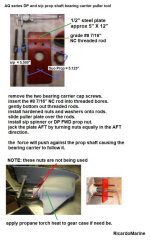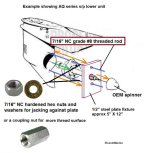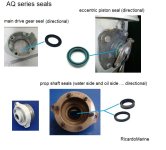Just winterizing here and found some pretty milky oil. I have a volvo penta 280 DP. My exhaust bellows came off a few weeks before hauling, and I have reason to suspect that the u-joint bellows had also come loose when I raised the drive up. The hose clamp was gone when I hauled this week, and the boot was slightly off on the bottom. My question is this: is it reasonable to think that the oil would be come quite milky from a few weeks (let's say 5-10 hours runtime total) if the ujoint bellows was leaking a little?
A small amount of water (when churned up by the gears) can quickly turn oil milky.
The good news is..... if the oil remains hydrogenated, it normally won't cause any immediate damage.
None-the-less, get it out of there ASAP.
Next thing I'm going to try is pressure test but I'm curious mainly about the bellows factor.
FYI... when you perform a Pressure/Vacuum leak down test, the gear oil must be drained for the Pressure Leak-Down test.
The Vacuum Leak-Down test doesn't care.
A Leak-Down test involves a time frame!
In other words, while the drive is pressurized, monitor how long it will hold XX psi.
Do the same with the Vacuum leak down test.
It is necessary to spin the drive shaft, eccentric piston and the prop shaft while doing the tests.
As for the drive shaft bellows coming loose;
......water enters this area and will reach the main drive gear seal.
......water rusts/corrodes the carbon steel seal surface washer.
......the rust becomes abrasive and starts destroying the seal lip.
......as the drive warms up from use, the gear oil expands some creating a mild positive pressure inside.
......this can cause a small loss of gear oil.
......as the drive cools down, negative pressure builds inside.
......the negative pressure can cause water to be pulled into the interior.
Thanks!




